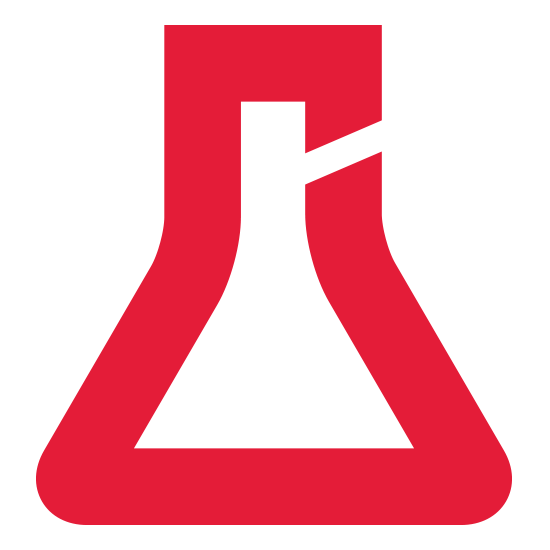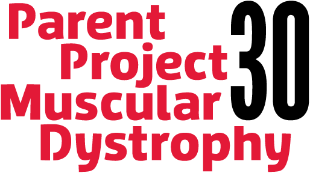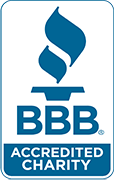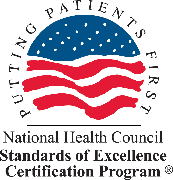PPMD’s Gene Therapy Initiative
In early 2017 PPMD launched our Gene Therapy Initiative, a long-term concept that seeks to accelerate the potential of gene therapy as a therapeutic for Duchenne. Our early strategy was to bring attention to and fund key questions that must be answered in order for the technology to progress towards approvals. Additionally, the Gene Therapy Initiative intentionally contains an educational component as, while promising, gene therapy is new and presents different questions and considerations than those of previous therapies.
Since the launch of the Initiative, PPMD has funded over $7 million in a variety of gene therapy and related approaches to several institutions, including micro-dystrophin gene transfer, CRISPR/Cas9, Dup2, and GALGT2, as well as research into the effects of gene therapy on the heart and potential immune responses gene therapy may provoke.
In 2023, our collective community celebrated the first accelerated approval of a gene therapy for Duchenne. PPMD is proud to have been supporters of the early work that led to the therapy.
PPMD Funding
 PPMD Awards $2.2 Million Grant to Nationwide Children’s Hospital to Explore Gene Therapy in Duchenne — January 2017
PPMD Awards $2.2 Million Grant to Nationwide Children’s Hospital to Explore Gene Therapy in Duchenne — January 2017
The first award marked PPMD’s largest single research investment to date, a $2.2 million, milestone-driven award to Dr. Jerry Mendell and Dr. Louise Rodino-Klapac of Nationwide Children’s Hospital to explore a microdystrophin gene transfer via AAV delivery in Duchenne.
This investment is to carry out a Phase 1 clinical trial designed to explore several issues confronting gene transfer such as systemic delivery of the virus (vector that carries the micro-dystrophin) and questions around antibodies to the virus (whether the immune system has seen this virus and developed resistance) or to the microdystrophin in order to maximize our knowledge of safety and to broadly apply learnings to individuals with Duchenne. To date, only a few patients have been dosed.
Learn morePPMD Awards $250,000 Grant to UT Southwestern Medical Center to Explore CRISPR/Cas9 Technology — January 2017
PPMD’s initial investment in the laboratory of Dr. Eric Olson at UT Southwestern was to further research the potential of CRISPR/Cas9 in Duchenne and build on his previous work. This grant brought focus to essential questions that have to be examined.
CRISPR/Cas9 has the potential for off-target effects as it works through the precision of the molecular signposts, or guidewires, pinpointing where to deliver. In other words, to ensure safety, we have to make sure the molecular scissors targets only the dystrophin gene.
Through this grant, Dr. Olson examined the stability and functionality of edited forms of dystrophin, assessing possible off-target effects in mouse models, developed for this specific question, in order to determine the safety of this approach.
Learn morePPMD Awards $329,000 Grant to Binghamton University to Examine Role of Immune System on Dystrophin Restoration — December 2018
PPMD awarded Dr. Kanneboyina Nagaraju and his team at Binghamton University’s School of Pharmacy and Pharmaceutical Sciences a $329,000 grant to continue his work examining the immune response to the production of new dystrophin protein, resulting from exon skipping and gene therapy treatments. This is an important next step in our exploration of both gene therapy and exon skipping as potential treatments for Duchenne.
To better understand the role of the immune system on dystrophin restoration, Dr. Nagaraju will explore the combination of exon skipping or micro-dystrophin gene therapy with an immunosuppressive treatment, using one of the following drugs:
- Treatment with rituximab to block antibodies to newly produced dystrophin.
- Treatment with abatacept CTLA4ig to halt an anti-dystrophin immune response.
- Treatment with either prednisolone, vamorolone, or eplerenone to test the respective reduction in inflammatory and anti-dystrophin immune response.
PPMD Awards $105,000 Grant to Explore A Mini-Dystrophin Gene Aimed at Protecting Cardiac Function — January 2019
PPMD awarded the University of Missouri School of Medicine a grant for $105,000 to continue development of a minimized dystrophin gene aimed at protecting cardiac function in people with Duchenne. The project is led by Dongsheng Duan, PhD, Margaret Proctor Mulligan Professor in Medical Research at the MU School of Medicine.
This research project will investigate two different regions of the DMD gene to improve cardiac function. In patients with some expression of dystrophin, the absence of a particular region of the DMD gene was associated with higher incidence of cardiac disease. Presumably this region is important for protecting cardiac function. This region, termed the heart domain, will be incorporated into a modified mini-dystrophin gene.
Another region, known as the CT domain, was recently associated with milder cardiac disease. The CT domain was not included in the mini- or micro-dystrophin genes in current clinical trials as it had no contribution to skeletal muscle. This CT domain will be combined with a mini-dystrophin gene and evaluated for its ability to protect cardiac function in a pre-clinical model. Exploring both of these regions, the heart domain and the CT domain, will provide insight into how mini- and micro-dystrophins can be constructed to best protect the heart.
These modifications to mini-dystrophin present the next step forward in treating Duchenne cardiomyopathy. While the focus of this research is on improving cardiac function through modified mini-dystrophin genes, skeletal muscle function will be evaluated. The hope is not to protect the heart at the expense of skeletal muscle, but to generate mini-dystrophin genes that can fulfill both roles.
Learn morePPMD Awards $100,000 Grant to Nationwide Children’s Hospital to Further Explore GALGT2 Gene Therapy — April 2019
PPMD announced that Drs. Paul Martin and Kevin Flanigan from the Research Institute at Nationwide Children’s Hospital have completed work under a $100,000 grant exploring GALGT2 gene therapy technology as a potential treatment for Duchenne.
The absence of dystrophin in muscle cells leads to membrane instability, which contributes to Duchenne’s progressive muscle wasting. Over-expression of the GALGT2 gene has been seen to improve muscle pathology in pre-clinical muscular dystrophy models. This gene therapy strategy will not restore dystrophin, but recruit dystrophin surrogates to compensate for the lack of dystrophin and protect the cell membrane. GALGT2 therapy, if successful, could be delivered to any person with Duchenne regardless of their mutation(e.g., deletion, duplication, non-sense mutation). Additionally it has the potential to work in combination with other therapeutic strategies.
Learn morePPMD Awards $175,000 Grant to UCLA to Explore Optimization of CRISPR Technology in Duchenne — June 2019
PPMD awarded Drs. Melissa Spencer and April Pyle from the David Geffen School of Medicine at UCLA and the Center for Duchenne Muscular Dystrophy at University of California – Los Angeles (UCLA) a $175,000 grant to continue their work optimizing a CRISPR/Cas9 platform to treat people living with Duchenne.
Dr. Spencer and her team are working on the following efficacy and safety improvements for CRISPR/Cas9:
- Designing and testing guide RNAs that may be more efficient. It is possible that reducing the size of deletion could yield improved efficiency of deletions. The alternate guides being tested in this effort would recapitulate deletions that are observed in mild Becker patients.
- Implementation of strategies to reduce Cas9 half-life. One major concern with CRISPR technologies is the off-target effects, or the cutting of DNA that is not the sequence of interest, which can cause harm. By reducing the amount of time Cas9 is active in a cell, the probability of off-target DNA cutting could be reduced.
- In addition to limiting the time Cas9 is active, a variant Cas9 protein with higher accuracy will be tested. This modified Cas9 has been reported to reduce off-target cutting while maintaining its activity. For both of these safety measures, efficacy will be evaluated to ensure these additions are not impeding the CRISPR/Cas9 platform’s performance.
PPMD Awards University of Florida $1 Million for Novel Gene Therapy Approach Targeting the Heart — September 2019
Gene therapy, utilizing AAV vector as the delivery vehicle, provides a potential strategy to deliver transgenes targeting the mechanisms underlying the development of dilated cardiomyopathy. This funding supports the development of a heart specific therapy using an AAV vector containing two transgenes to restore calcium handling and prevent mitochondrial dysfunction. This therapy will potentially be able to treat the hearts of people living with Duchenne and Becker, in a way that is independent of, or complementary to, micro-dystrophin based gene therapy.
Learn more Duchenne UK and Parent Project Muscular Dystrophy Award $350,000 to Address Immunological Challenges of Gene Therapy in Duchenne Muscular Dystrophy — February 2021
Duchenne UK and Parent Project Muscular Dystrophy Award $350,000 to Address Immunological Challenges of Gene Therapy in Duchenne Muscular Dystrophy — February 2021
PPMD and Duchenne UK announced Professor Kanneboyina Nagaraju at Binghamton, the State University of New York, as the recipient of their Joint Research Grant Call of 2020. The full title of the research project is “Targeting the innate immune system to block acute inflammatory and chronic immune response to transgene and AAV vector in DMD”. Professor Nagaraju’s research will receive funding from the organizations in the amount of $350,000.
Learn more Parent Project Muscular Dystrophy Awards $348,891 Grant to University of Florida Wellstone Center — March 2021
Parent Project Muscular Dystrophy Awards $348,891 Grant to University of Florida Wellstone Center — March 2021
PPMD awarded the University of Florida (UF) Wellstone Muscular Dystrophy Cooperative Center a grant for $348,891. The project titled “Understanding and Improving AAV Gene Therapy for DMD” is led by H. Lee Sweeney, Ph.D., director of the UF Myology Institute and the Thomas H. Maren, M.D., eminent scholar chair in pharmacology and therapeutics in the UF College of Medicine. Dr. Sweeney has been the director of a Wellstone Center (one of the six) since 2005, which he relocated to the University of Florida in 2015.
Learn more Parent Project Muscular Dystrophy Awards $31,500 Grant to Understand Immune Response to CRISPR/Cas-9 Gene Editing Strategies — April 2021
Parent Project Muscular Dystrophy Awards $31,500 Grant to Understand Immune Response to CRISPR/Cas-9 Gene Editing Strategies — April 2021
PPMD awarded the University of Missouri School of Medicine a bridge grant for $31,500 to continue evaluating CRISPR therapy in a pre-clinical model of Duchenne. The project is led by Dongsheng Duan, PhD, Margaret Proctor Mulligan Professor in Medical Research at the MU School of Medicine.
Learn more
 PPMD, CureDuchenne, Muscular Dystrophy Association Announce Collaborative Project to Focus on Re-Dosing Gene Therapy in Duchenne Muscular Dystrophy — June 2023
PPMD, CureDuchenne, Muscular Dystrophy Association Announce Collaborative Project to Focus on Re-Dosing Gene Therapy in Duchenne Muscular Dystrophy — June 2023
CureDuchenne, Muscular Dystrophy Association (MDA), and Parent Project Muscular Dystrophy (PPMD) announced a collaborative clinical trial grant to test repurposing of the FDA-approved drug Vyvgart (developed by argenx), for its potential ability to reduce antibodies to adeno-associated virus (AAV) in Duchenne patients. The three organizations provided $100,000 each to sponsor a one-year clinical study led by investigator Barry Byrne, M.D., Ph.D., Chief Medical Advisor, MDA and Director of the Powell Gene Therapy Center at the University of Florida to assess the safety and efficacy of efgartigimod alfa-fcab (Vyvgart) to lower AAV antibodies precluding DMD patients from gene therapy. Vyvgart is an approved drug currently used to treat autoimmune diseases by reducing overall levels of circulating IgG antibodies. It has proven effective in reducing pathogenic acetylcholine receptor antibodies present in myasthenia gravis (MG). The study will investigate whether Vyvgart has the ability to reduce AAV antibodies to levels compatible with safe and effective delivery of gene therapies in DMD patients. Positive results from this study may be applicable to the translation of AAV gene therapies for other neuromuscular diseases.
Learn morePediatric Gene Therapy and Medical Ethics (PGTME) Working Group
As part of PPMD’s Gene Therapy Initiative, we reached out to NYU’s Division of Medical Ethics with the goal of initiating a Working Group to identify and address these emerging ethical issues surrounding investigational gene therapy studies in Duchenne and the broader pediatric patient community.
The goal of the Pediatric Gene Therapy and Medical Ethics (PGTME) Working Group, supported by funding from PPMD, is to advance research, policy, and education, by promoting improved understanding of the challenges and best practices for ethical research across the evolving landscape of genetic therapies. This working group includes a range of stakeholders to include patient advocacy, law, medicine, clinical research, and the biopharmaceutical industry.





